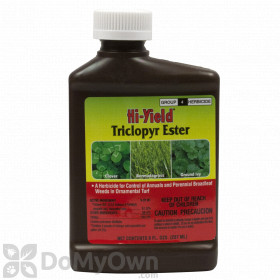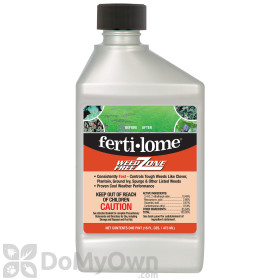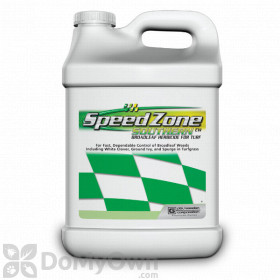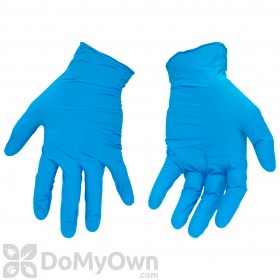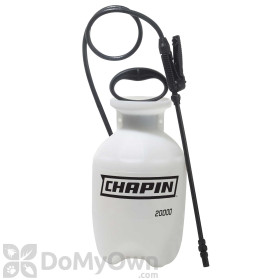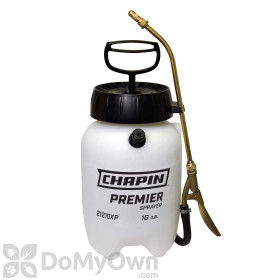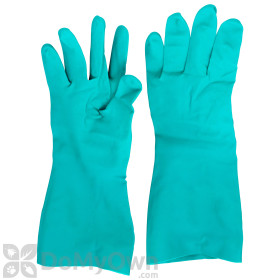
Creeping Charlie (also known as ground ivy or gill-on-the-ground) is an invasive weed that can quickly cover the moist and shady areas of your lawn. The weed grows fast by roots, seeds, and stems, but can be removed with patience and the right products. Read below to learn how to get rid of Creeping Charlie.
Improve Lawn Conditions
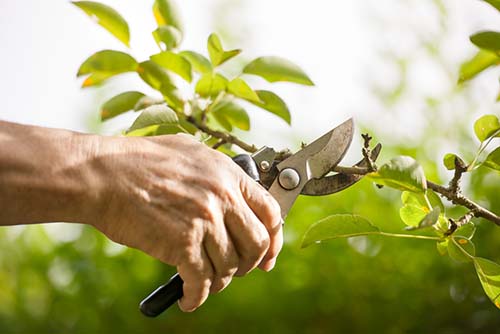
Creeping Charlie thrives in shady, moist areas. One of the easiest ways to control Creeping Charlie and prevent it from growing further is to remove the shade and moisture in your lawn.
Assess your lawn's drainage after storms. Does water pool in one area? That area may need to be addressed with irrigation or landscaping to prevent water build up.
Take care to not overwater when using a sprinkler. Use the sprinkler in the morning to allow the water to dry during the day. This will help prevent weeds like Creeping Charlie and combat lawn fungus, which also grows in moist conditions.
Trim back tree and shrub branches where possible to let sunlight reach your lawn.
The health of your lawn can also affect where Creeping Charlie will grow. Creeping Charlie is less likely to grow in lawns that are dense and properly fertilized. See our lawn care schedules for detailed information on how to maintain your lawn year-round for optimal health.
Use a Post-Emergent Herbicide

After improving lawn conditions, use a post-emergent herbicide on any existing Creeping Charlie in your lawn.
Selective post-emergent herbicides, like Hi-Yield Triclopyr Ester will target Creeping Charlie (ground ivy) specifically but may need a few applications to completely control the weed. A non-selective post-emergent herbicide, like Roundup QuikPRO is stronger and will kill any plant it is sprayed on, meaning it could damage turf around the weed that you may spray during your application. Post-emergent herbicides with triclopyr or 2,4-DP with ester are particularly effective against Creeping Charlie. Be sure any herbicide you use is labeled for your turf type, or else you may damage your lawn.
Once you choose your herbicide, mix with water in a hand pump sprayer. Consult the label of your herbicide for the amounts of water and product to use. Agitate the sprayer to mix then spray on the weed.
Be sure to wear gloves, long-sleeves, pants, and closed-toe shoes while spraying.
It will take time for the post-emergent herbicide to die after being sprayed. Consult the label of your product for how often to apply. You may need to apply several times for full control.
Once the weed has died, rake or pull the weed. Be sure to get the full roots of the weed when removing. Dispose of the dead weed in a lawn bag, do not leave any of the weed remaining on the lawn as a new plant could grow from the remains.
Pro Tip
There is a myth that sprinkling Borax on your lawn will kill Creeping Charlie. In fact, this will not kill the weed but will increase the toxicity of your soil. Use professional products or pull weeds by hand instead.
Products needed for Step 2
Pull Weeds By Hand
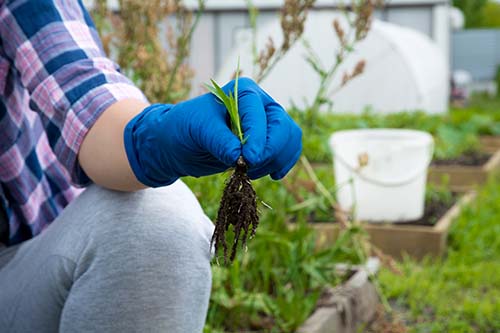
If your Creeping Charlie infestation is minimal, the weeds can be pulled by hand or with the help of a hand shovel.
When pulling by hand, be sure to remove the roots of the weed as roots left in the ground will grow more weeds. Dispose of the weed as you would grass clippings, do not leave any weeds on the lawn as they will create new weeds.
Once you have contained your Creeping Charlie, you can prevent new weeds from forming. Learn how in our Creeping Charlie Prevention Guide.




